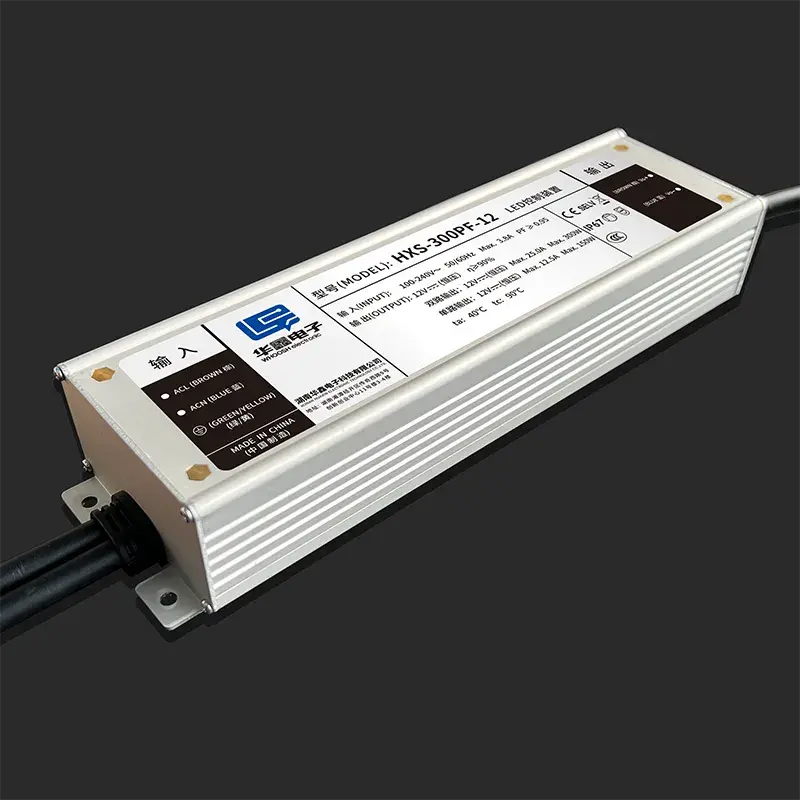The Differences Between Waterproof and Rainproof Transformers
There is no doubt that the most common considerations are waterproof transformers and rainproof transformers when choosing the right transformer for your environment. While these terms might seem interchangeable at first glance, they serve different purposes and are designed to withstand distinct environmental conditions.
Protection Level Differences
Waterproof transformers offer the highest protection standards, typically rated between IP67 and IP68. They are fully sealed to block dust and can operate reliably even after long-term immersion in water. In the view of their strong sealing and high-quality insulation, these transformers remain safe and durable in harsh, humid, or submerged environments.
Rainproof transformers generally have an IP44 protection level. This allows them to block solid particles larger than 1mm and resist water splashes or rainfall from any direction. Although they are not designed for immersion or prolonged water exposure, their construction effectively prevents damage caused by rain or light splashes.

Application Scenarios
Waterproof transformers are commonly applied in lighting systems that may come into direct contact with water, such as underwater lights, in-ground lights, fountain lighting, and large outdoor landscape lighting projects. They provide reliable performance and ensure safety, maintaining stable operation.
Rainproof transformers are primarily applied in outdoor lighting systems that may be exposed to rainfall but are not intended for submersion. They are commonly used in building façade lighting, landscape and night scene illumination, as well as in LED guardrail tubes, digital tubes, and general outdoor lighting power supplies. They offer a practical and economical solution.
How to Choose the Right Type
Installation Environment
Choose waterproof transformers for areas with high humidity, water immersion, or frequent splashing. Select rainproof models for environments with only occasional rain exposure.
Project Requirements
Waterproof transformers are essential for underwater and landscape lighting projects. Rainproof transformers suit architectural and decorative lighting systems.
Budget Considerations
Rainproof transformers are suitable for moderate outdoor applications, while waterproof models ensure long-term reliability in extreme conditions.
FAQs about Waterproof and Rainproof Transformers
1.Can a rainproof transformer be used in a flood-prone area?
No. Rainproof transformers are not designed to withstand submersion. Waterproof transformers are necessary in such cases.
2.Are waterproof transformers more energy-efficient than rainproof ones?
A: Efficiency depends on design and load, not water resistance.
3.What IP rating should I look for in a waterproof transformer?
Look for IP65 or higher, with IP68 being ideal for areas with potential submersion.
4.Do rainproof transformers require special installation?
Generally, no. Proper elevation and placement are recommended to avoid water pooling around the base.
5.How long do waterproof transformers last compared to rainproof models?
With proper use, waterproof transformers can last 10–15 years or more, while rainproof transformers may have a shorter lifespan in harsh environments.
The difference between waterproof and rainproof transformers lies in their protection level and application environment. Waterproof transformers provide complete protection against dust and prolonged water immersion. It’s ideal for fountains and underwater lighting. Rainproof transformers protect against rain and splashes, making them suitable for building and decorative outdoor lighting. Selecting the right type ensures electrical safety and efficient power delivery.
 EN
EN AR
AR NL
NL FR
FR DE
DE EL
EL HI
HI IT
IT KO
KO PL
PL PT
PT RU
RU ES
ES TL
TL IW
IW ID
ID UK
UK VI
VI HU
HU TH
TH TR
TR FA
FA MS
MS SW
SW AZ
AZ UR
UR BN
BN KK
KK